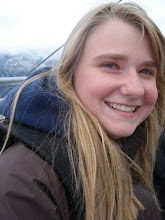Neighborhood Gets First Public Park
W. Horton Entrance to Cordata Park Trail.
The community campaign for more park space in the Guide Meridian/ Cordata neighborhood will soon come to fruition next month, with the opening of the first recreational trail in Bellinghams north end.
Until the official introduction of the trail on Nov. 7, there has been little or no public access available to Cordata park. The path will extend 3,000 feet through the park, starting at the south entrance of the trail on W. Horton Road. The north entrance empties onto the sidewalk that runs parallel to Cordata Pkwy.
Bellingham Parks and Recreation purchased the 20 acres of land that make up the park, in 2007. The purchase came after years of advocacy for more park space.
The fight was led by a coalition between the Guide Meridian/ Cordata Neighborhood Association, and community members, said Adrienne Lederer, the president of the neighborhood association.
Lederer said that people were asking the association, “Where are the parks? Where are the trails? There's nothing on the north end.”
Two decades ago a large section of the neighborhood had been 700 acres of a locally owned cattle farm, said Julie Guy, co-founder of the neighborhood association. When the land was sold, the neighborhood developed the zones dedicated to Industrial and Commercial construction. Park space was over looked.
Bob Sanders, who writes the neighborhood blog, “The Insider,” believes the city is finally making up for its neglect of the area.
“It sounds like we're whining,” Sanders said. “And we are, but if you look at a map of Bellingham, there's a southern tilt you will find remarkable.”
The process of bringing a park to the neighborhood has taken three years to complete. It began with the task of finding enough support to come up with a proposal.
The Bellingham Parks and Recreation department helped the neighborhood association come up with a master plan for the park. In 2008, The Bellingham City Council approved the plan. In early 2010, Phase 1, construction of the first trail, was to begin.
In the year leading up to the groundbreaking, Public meetings were held to plan the walkway. “People wanted benches, somewhere to sit during their walk, and as much trail as possible,” said Leslie Bryson, manager of design development for the Bellingham Parks and Recreation.
Once the plan was finished, the team had to submit a proposed budget. Nine companies bid on the project. According to the contract approved by the city council, the parks and recreation had to choose the bidder with the lowest cost that fulfilled the plans needs.
Once they had chosen a bidder, Razz Construction Inc., it became clear planning the trail design would be complicated, Bryson said. Much of the space available for park designation is old-growth trees and wetlands.
The wetlands made extending a section of trail from point A to point B sometimes hard to do, Bryson said. A proposal had to be formed and approved for wetlands mitigation. The contract, regulated by the Army Corporation of Engineers required that, for each acre of wetlands impacted, seven acres of wetland had to be preserved.
The trail impacted less than one acre. Ledered said that designated areas, mostly within or bordering the park were mapped out for restoration and preservation. The funds required for wetland mitigation were $250,000, which is a small amount from what it could have been, said Bryson.
Additionally one of the streams that the trail would impact had a salmon habitat. The trail also had to comply with the regulations of the Endangered Species Act.
It will be at least three to five years before completion of Cordata park is possible, Bryson said. City funding is tight. Construction of the first trail alone cost the city $600,000, and it is estimated that the total funds needed for the project reaches about $4 million. When finished, the park will include a shelter, play fields, lavatory buildings, and a play area for children.
“One of the interesting aspects of this park is the only way people will be able to drive to the park is if Horton is extended,” Sanders said. entrances to the park currently have no public parking lots. There is still much work to do on the park before any one can consider a park, in the traditional sense, Sanders said.
“ Its not any fault of not wanting to do it,” said Lederer. In November, the Bellingham community will have the opportunity to vote on the issue of which areas of city planning government funds will be allocated to.
“The community has been very supportive of having more parks and trails,” said Bryson.
Ideally the next phase, a second trail extending from the first, will be completed by the end of next year, Bryson said.

